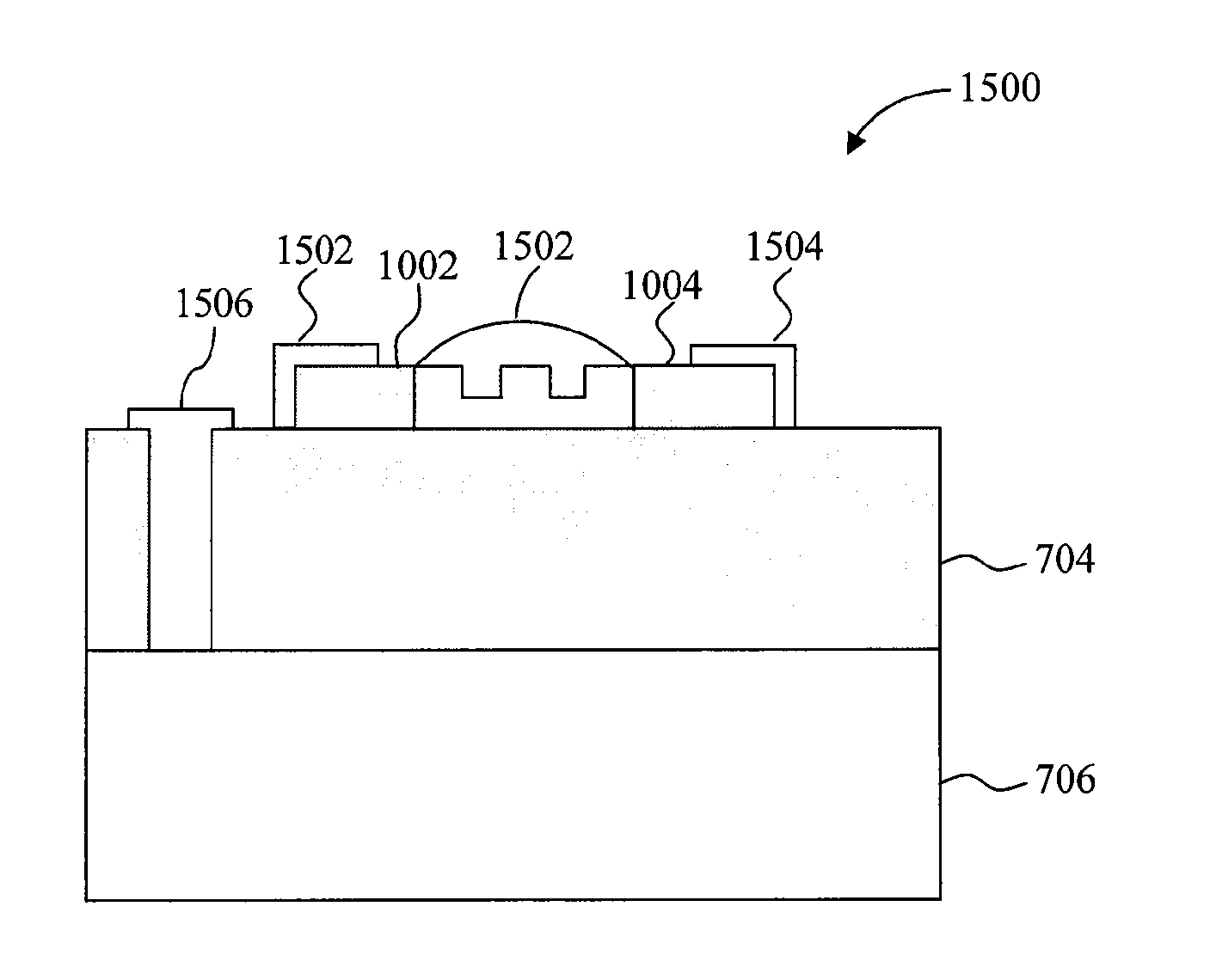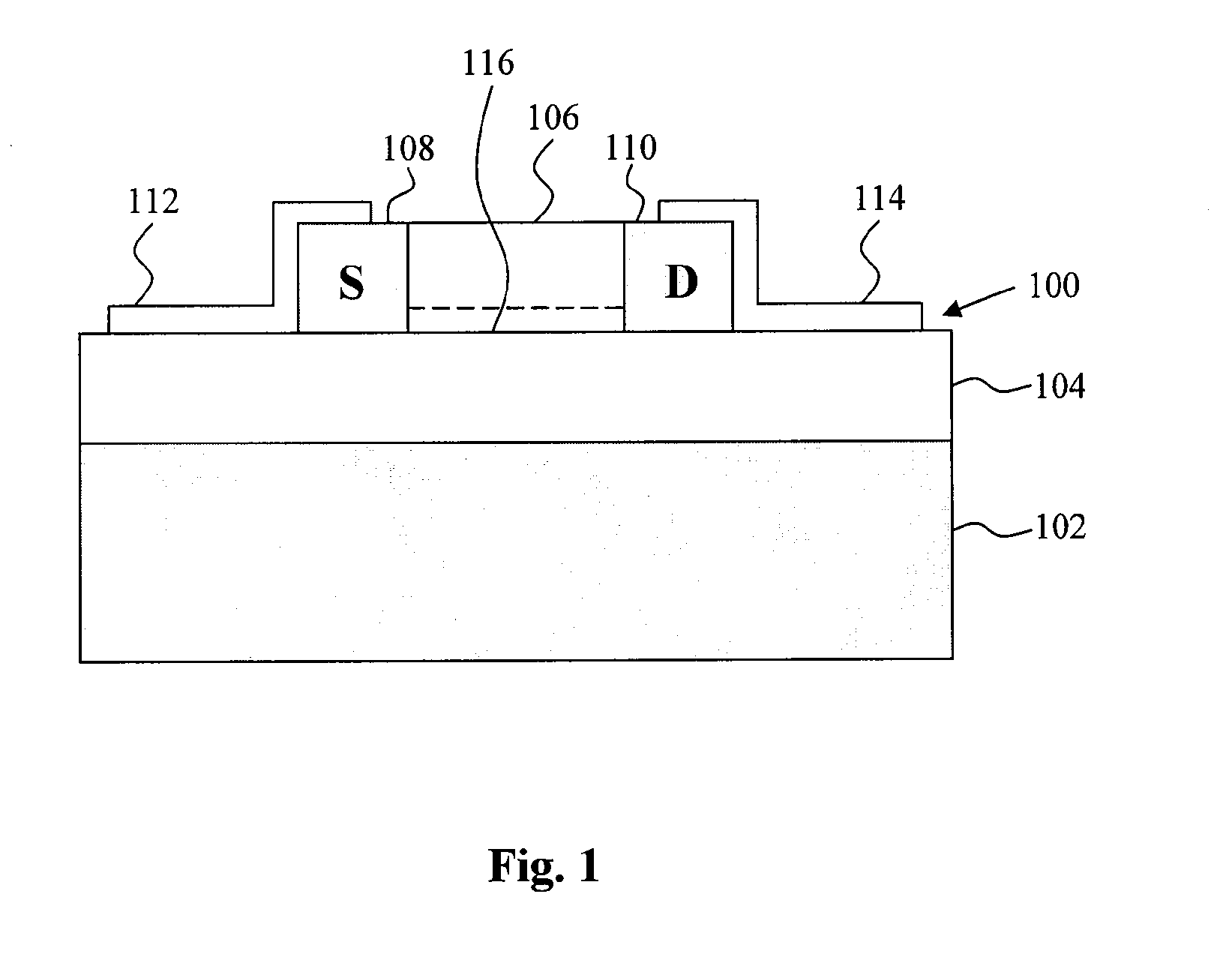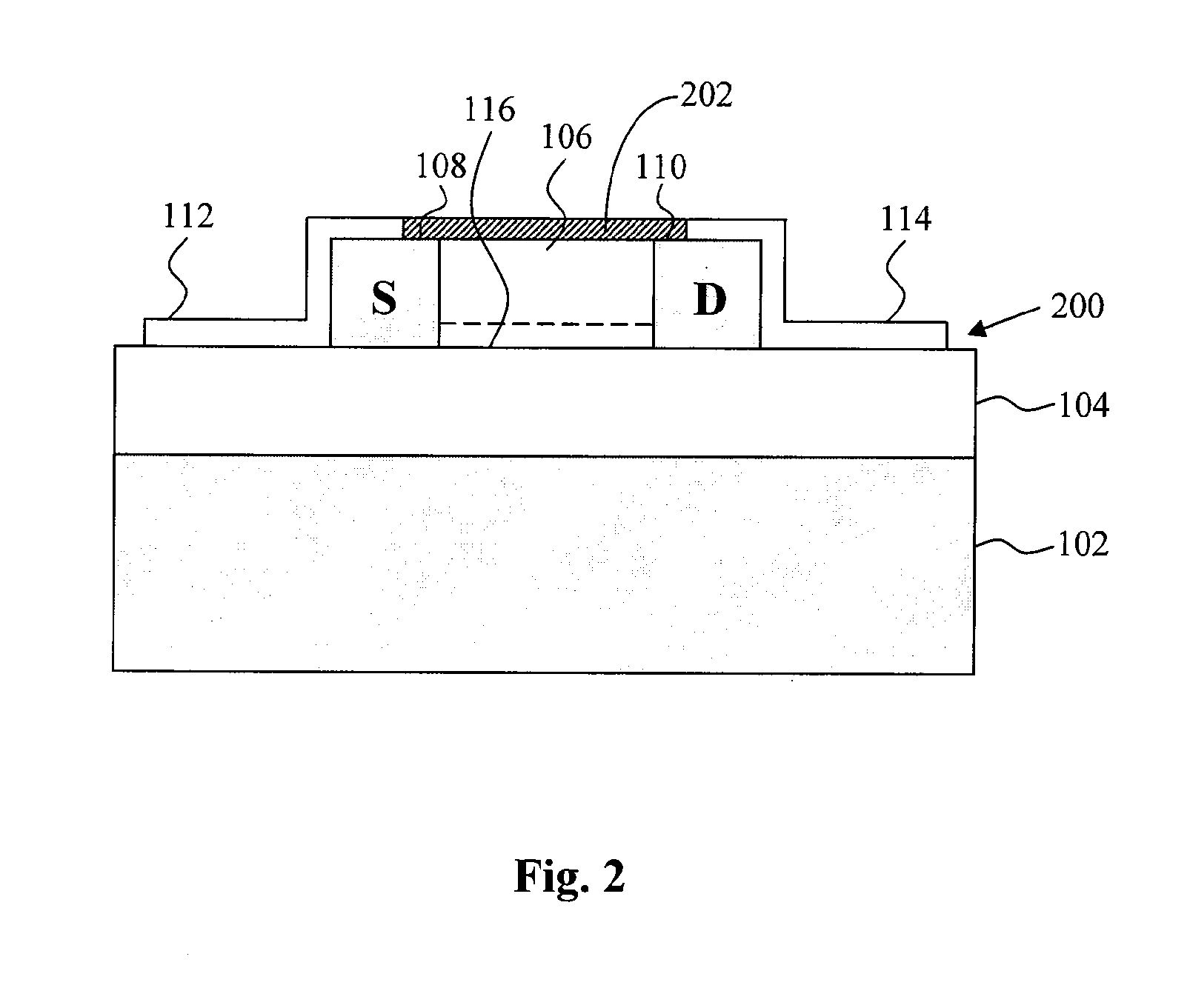NANO structured field effect sensor and methods of forming and using same
a field effect sensor and nanostructure technology, applied in the field of solid-state sensors, can solve the problems of relatively low sensitivity, relatively bulky and expensive non-fet devices, and relatively unstable fet-based devices, and achieve the effect of improving device sensitivity and high sensitiveness
- Summary
- Abstract
- Description
- Claims
- Application Information
AI Technical Summary
Benefits of technology
Problems solved by technology
Method used
Image
Examples
Embodiment Construction
[0032]The present invention provides an improved solid-state sensor for detection of biological and chemical species and for radiation detection. More particularly, the invention provides a field-effect transistor (FET) including a porous or structured channel region, which operates as a fully-depleted, exponentially-coupled (FDEC) sensor. As discussed in greater detail below, a threshold voltage or channel conductance of the sensor is manipulated as sensed biological, chemical, or radioactive species are detected, causing an exponential change in channel current.
[0033]The exponential change of channel current of the sensors of the present invention is in an opposite direction compared to that of typical FET sensors, and increases in n-channel type devices upon detection of species having excess electron charge or negative charge. Such an exponential response makes the sensors of the present invention more sensitive for qualitative and quantitative analysis.
[0034]FIG. 1 illustrates ...
PUM
 Login to View More
Login to View More Abstract
Description
Claims
Application Information
 Login to View More
Login to View More - R&D
- Intellectual Property
- Life Sciences
- Materials
- Tech Scout
- Unparalleled Data Quality
- Higher Quality Content
- 60% Fewer Hallucinations
Browse by: Latest US Patents, China's latest patents, Technical Efficacy Thesaurus, Application Domain, Technology Topic, Popular Technical Reports.
© 2025 PatSnap. All rights reserved.Legal|Privacy policy|Modern Slavery Act Transparency Statement|Sitemap|About US| Contact US: help@patsnap.com



